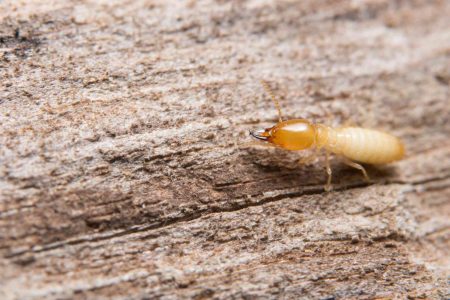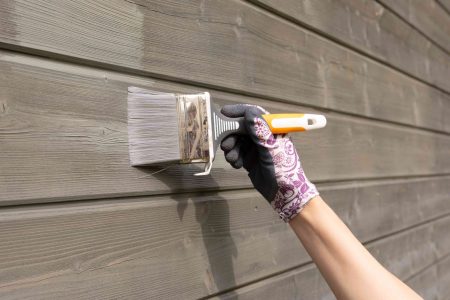Whether you’re just getting started with beekeeping, or if you’ve already got established colonies, you may decide that building a beehive is for you. These beehive plans are a fairly straightforward project that’s great for the beginner or intermediate woodworker. Building your own beehive means that you can customize it to make it fit in your space and work well for your bees.
There are three main types of beehive plans, Langstroth, Top Bar, and Warre. You’ll be able to find several DIY tutorials for each of these below as well as an explanation of what makes these hives unique. Then you’ll be able to choose the best type of hive for your bees.
Langstroth Beehive Plans
When you picture a beehive, you’re most likely picturing a Langstroth beehive. This is the most common type of beehive in the United States. These consist of several stacked boxes, the number of boxes depending upon the weather and size of the hive. Inside each box is eight to 10 removable frames. This is a great choice if you have a lot of bees or plan to expand in the future.
Langstroth Beehive Construction: Ontario Bees has a free PDF available that will take you through the process of building a Langstroth beehive. This plan shows you how to build both the boxes and the frames.
Long Langstroth Hive: This beehive plan builds a horizontal hive instead of a vertical one. It costs under $50 in materials and only takes a few hours to build. The walls are thick, meaning the hive will get extra insulation and be very durable. It fits 31 standard deep frames.
Langstroth Hive: This Langstroth hive holds eight frames instead of 10, so there’s more space in between the frames and the body of the hive is lighter.
How to Make a Beehive: This version of a Langstroth beehive uses screwed-on handles instead of point or notched hive handles, making it an easier build.
How to Build a Langstroth Beehive: This DIY guide takes you through building brood boxes, super boxes, frames, and other parts of the beehive. Besides instructing you on how to build a Langstroth beehive, this guide also helps you repair any damage or make replacements to parts.
How to Build a Beehive: Here’s a free plan to help you build a Langstroth beehive. It takes you through each level of the hive and shows you how to build it. A cut list, diagrams, and a bunch of step-by-step directions show you exactly how it should be done.
10-Frame Langstroth Beehive: This DIY plan will show you how to build a Langstroth beehive that has 10 frames. With this plan, you’ll be spending less than $20 to build your own which is a huge saving if you were to buy one. It may not look the prettiest, but this hive will compete with the other more expensive hives.
Top Bar Hive Plans
Top Bar Hives are the simplest type of beehive that you can build. They are very forgiving and you can construct these out of materials that you have on hand. Not only are they the easiest to build, but they are also the easiest to maintain for new beekeepers. These hives allow bees to build their own comb, taking a more organic approach to beekeeping. This type of beehive is a great choice if you’re looking to start a small-scale beekeeping endeavor.
Build a Top Bar Beehive: This intermediate building project takes you through each step of building a top bar beehive. The plan includes a materials list, a tools list, and step-by-step building directions with photos.
How to Build Your Own DIY Top Bar Beehive: This plan shows you how to build a top bar beehive out of cedar. Photos, diagrams, and a video are available to help you along the way.
Building a Top Bar Hive: If you’re on a budget and looking to build a beehive, this plan is made just for you. The design is based on simplicity and is made with the least amount of materials and tools.
How to Build a Top Bar Beehive: Build a top bar beehive using poplar for this free plan. There’s also a video that will take you through the process of building the hive.
Warre Beehive Plans
A Warre beehive is in between the Langstroth and Top Bar hives in size and weight. It’s the lowest maintenance type of beehive and is very space-efficient. It is heavier than Top Bar hives and you’ll have to add new boxes from the bottom of the hive. It’s not as commonly used as the other two types of hives.
Warre Hive Construction Guide: This Warre beehive is a vertical top bar hive that’s easy to build and easy to take care of. It takes 2-3 hours to build and will cost you $50-$75 in new materials to build one hive.
The Original Warre Hive: This beehive plan takes a look at the past and builds a very traditional Warre hive based on the original one built in 1948.
How to Build a Warre Beehive: Go through each section of building the beehive box, top bars, floorboard, quilt box, roof, and legs. There’s also a lot of information here on how to care for your Warre beehive including cleaning and harvesting honey.
Plans for Constructing a Warre Hive: There are lots of diagrams here that will walk you through the process of building a Warre hive. There are four boxes in this hive plan and a guide that shows you how to include windows so you take a peek at your bees.
Read the full article here














